Embarking on a journey through textile artistry, “What Is Patch Embroidery Called?” delves into the intricate world of embellishment and self-expression.
Commonly known as “appliqué embroidery,” this craft involves meticulously attaching fabric patches onto a larger canvas.
In this exploration, we unravel the historical tapestry of patch embroidery, tracing its origins from ancient functional use to the Renaissance’s artistic revival and contemporary applications.
Discover the diverse terminology, from the traditional “appliqué work” to the modern nuances of crafting identity through patches.
Join us in deciphering the captivating art and nomenclature that define the enchanting world of patch embroidery.
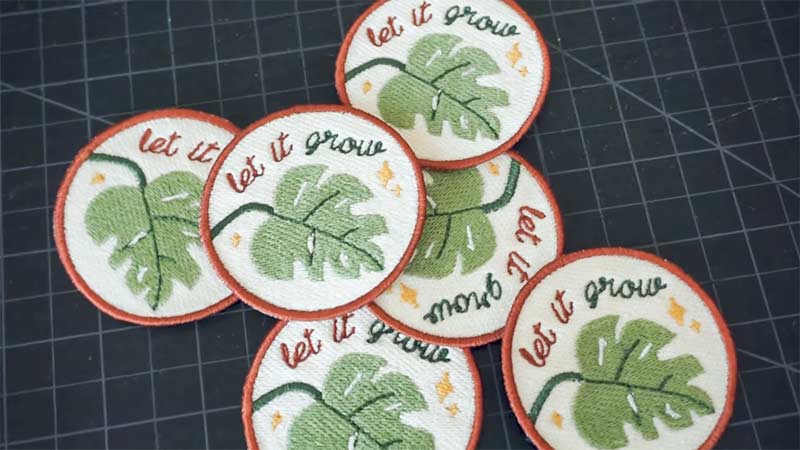
What Is Patch Embroidery Called?
Patch embroidery is commonly known as “appliqué embroidery” or simply “appliqué work.” The term “appliqué” refers to the technique of attaching pieces of fabric onto a larger fabric to create decorative designs.
Patch embroidery involves sewing or adhering patches onto a base fabric, resulting in layered and textured embellishments.
The term “appliqué” emphasizes this embroidery method’s artistic and decorative nature, where patches are carefully applied to achieve desired patterns, logos, or symbols.
This versatile and creative craft allows for personalized and unique expressions on clothing, accessories, and various other items.
History of Patch Embroidery
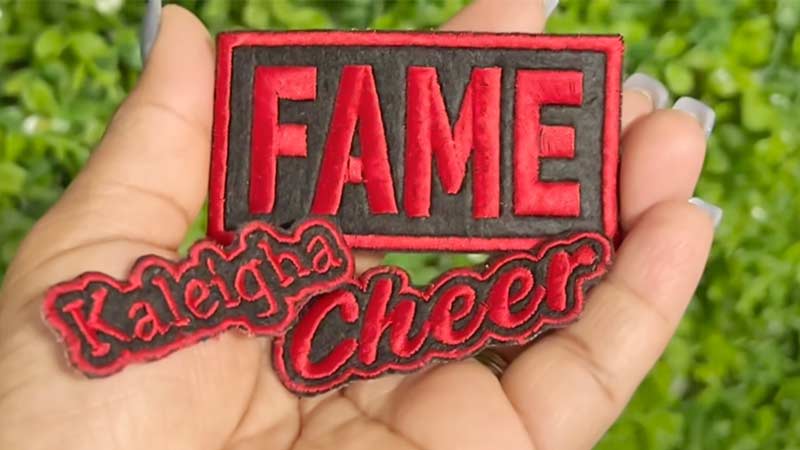
The history of patch embroidery is a fascinating journey that spans different cultures and historical periods. Patches and embroidery techniques for embellishing textiles and clothing have deep roots, reflecting both functional and artistic purposes.
Here’s a brief overview of the history of patch embroidery:
Ancient Origins
Patch embroidery is rooted in ancient times when people adorned their clothing with patches made from animal skins and fur.
Initially serving both functional and decorative purposes, these early forms of patches laid the foundation for the art of embellishing textiles.
Middle Ages
During the Middle Ages, patch embroidery took on religious and heraldic significance. Patches were intricately used to create religious icons and symbols on banners and vestments.
Heraldic patches depicting coats of arms and family symbols became common, reflecting the social and cultural values of the time.
Renaissance and Beyond
The Renaissance marked a period of artistic flourishing, and patch embroidery became more intricate and expressive. Patches adorned garments with visually stunning designs, showcasing the craftsmanship and aesthetic sensibilities of the era.
18th to 19th Centuries
In the 18th and 19th centuries, patch embroidery played a significant role in quilting and textile arts. Patchwork quilts became a popular artistic expression, with carefully crafted patches telling stories and depicting scenes through intricate stitching.
20th Century
The 20th century saw patch embroidery become intertwined with cultural movements. Notably, during the 1960s, patches became iconic symbols of the hippie movement, representing individuality and rebellion against the mainstream.
Modern Era
In contemporary times, patch embroidery remains a popular method for customizing clothing and accessories.
From political statements to personal expressions, patches are applied to denim jackets, backpacks, hats, and more, showcasing individual styles and affiliations.
Diverse Cultural Influences
Patch embroidery has been embraced globally, with diverse cultures contributing unique symbols, motifs, and techniques to the craft. This global exchange enriches the art, making patch embroidery a universally appreciated expression.
Types of Patch Embroidery
Patch embroidery comes in various types, distinguished by attaching the patches to the base fabric.
The main types of patch embroidery include:
Sew-On Patch Embroidery
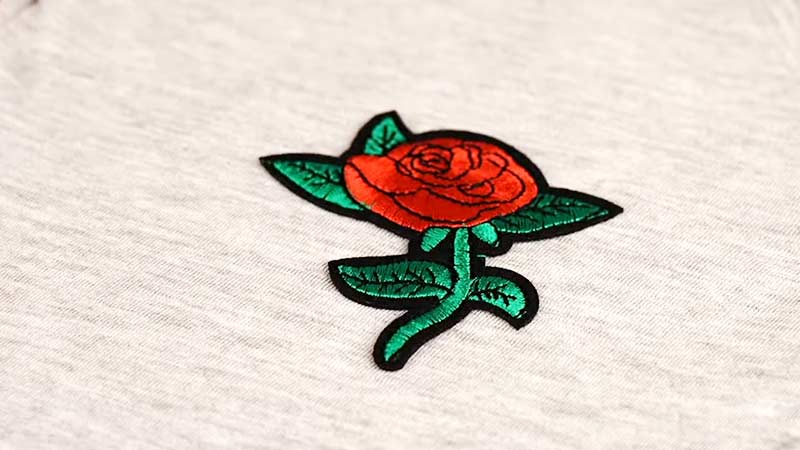
This is the traditional method where patches are sewn onto the base fabric using a needle and thread. Sew-on patches can be applied by hand or with a sewing machine, allowing for various stitching techniques and patterns. This method provides a secure and durable attachment.
Iron-On Patch Embroidery
In this type, patches have a special adhesive backing activated by heat and pressure. The patches are placed in the desired location, and heat is applied using an iron.
The adhesive melts and bonds the patch to the fabric. While convenient, iron-on patches may not be as durable or suitable for certain fabrics.
Velcro Patch Embroidery
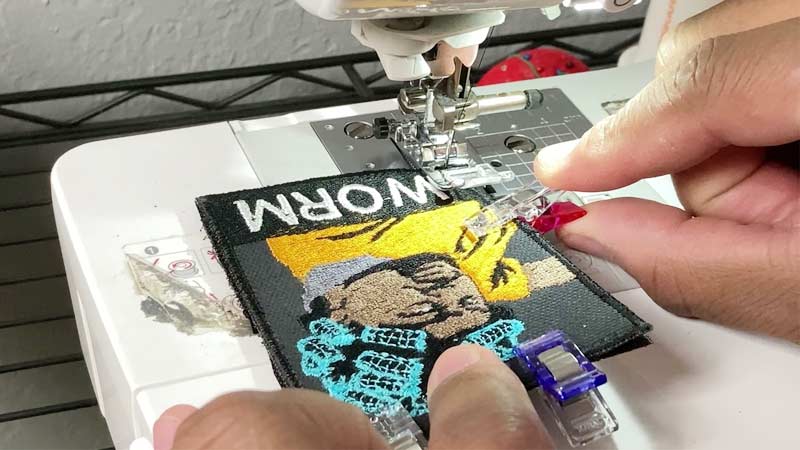
Velcro patch embroidery involves attaching patches to the base fabric using Velcro strips. Patches have a hook-and-loop fastener on the back, allowing for easy attachment and detachment.
This method is convenient for those who want the flexibility to change or remove patches without sewing.
Peel and Stick Patch Embroidery
Similar to iron-on patches, peel-and-stick patches have an adhesive backing. However, these patches can be peeled and stuck directly onto the fabric instead of using heat.
While convenient, they may not be as secure as sew-on patches, and washing can affect their longevity.
Magnetic Patch Embroidery
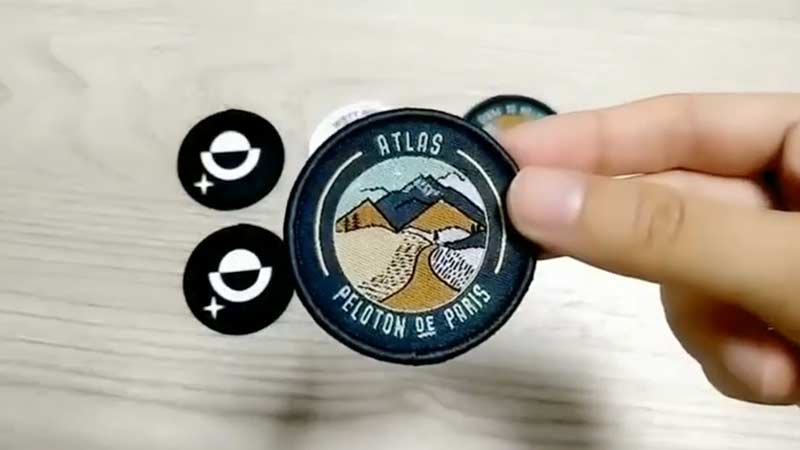
Magnetic patches utilize magnets for attachment. These patches have a magnetic backing that can be affixed to metal surfaces. While less common than other methods, magnetic patches provide an alternative for certain applications.
Invisible Patch Embroidery
Invisible patch embroidery involves attaching patches to minimize the visibility of stitches. This is often achieved through techniques such as satin stitching or threads that closely match the color of the patch and base fabric.
The result is a seamless and more discreet appearance.
What Are the Benefits of Patch Embroidery?
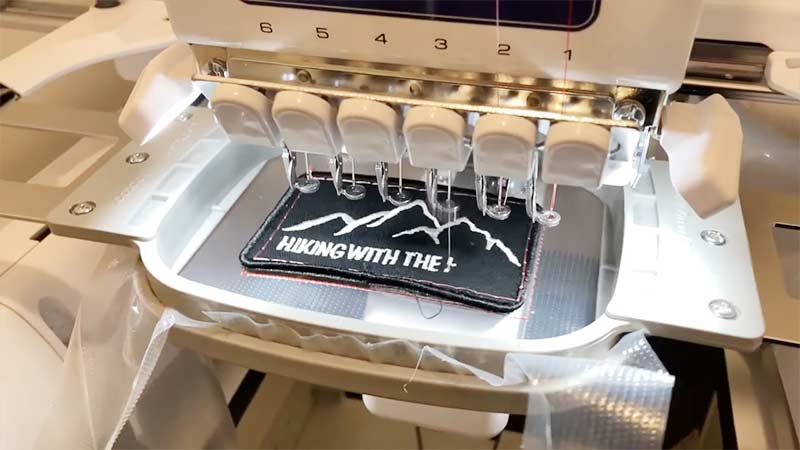
Patch embroidery offers a range of benefits, making it a popular and attractive option for creating customized and unique items. Some key advantages include:
Personalization
Patch embroidery allows individuals to create their own designs, logos, symbols, or letters on various items. This level of personalization enables self-expression and the embodiment of individual style preferences.
Ease and Enjoyment
The process of patch embroidery is generally considered easy and fun. Individuals can engage in creative projects at home with simple tools and materials. Online tutorials and guides further facilitate the learning process.
Durability and Longevity
Patch embroidery is known for its durability. The patches, especially sew-on, can withstand wear and tear better than other embellishments.
Patch embroidery can often be washed and cleaned without compromising its quality or appearance.
Versatility and Adaptability
Patch embroidery can be applied to various fabrics and materials, including cotton, denim, leather, nylon, and polyester.
It is also suitable for various items such as clothing, accessories, home decor, bags, hats, pillows, and curtains, showcasing its versatility.
Craftsmanship and Artistry
Sew-on patch embroidery, in particular, allows for intricate stitching patterns and artistic designs. This craftsmanship aspect adds an element of handiwork and creativity to the finished product.
Cultural and Symbolic Significance
Patches can hold cultural or symbolic significance, representing affiliations, achievements, or beliefs. They serve as visual representations of identity and can convey a message or narrative.
Convenience and Speed
Iron-on patch embroidery provides a quick and convenient option for rapidly adding embellishments. The heat-activated adhesive backing simplifies the application process, making it accessible for individuals with varying skill levels.
Reuse and Interchangeability
Velcro patch embroidery offers a reusable and interchangeable option. Patches with hook-and-loop fasteners can be easily attached or detached from the base fabric, allowing for flexibility in design changes.
Fashion Statements
Patches have become integral to fashion statements, allowing individuals to stay on-trend and showcase their unique style. They can be used to revive or update old garments, giving them a fresh and modern look.
Storytelling and Memory
Patches can be used to tell stories or capture memories. Whether commemorating events, achievements, or personal journeys, each patch can hold sentimental value and contribute to a visual narrative.
Applications of Patch Embroidery
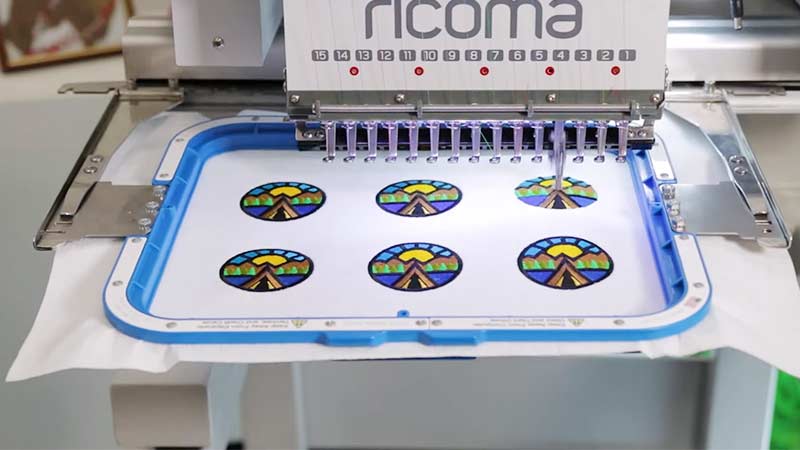
Patch embroidery has diverse applications across different industries and personal uses. Some notable applications include:
Apparel Customization
Patch embroidery is commonly used to customize clothing items such as jeans, jackets, hats, and shirts. Individuals can add patches with logos, symbols, or designs to express their style and make a fashion statement.
Uniforms and Workwear
Many organizations, including the military, police, sports teams, and businesses, use patch embroidery on uniforms and workwear. It helps identify individuals, showcase ranks, and display logos or emblems associated with specific groups.
Accessories
Accessories like bags, backpacks, and caps often feature patch embroidery. It allows for creative embellishments, enabling individuals to personalize their accessories and stand out with unique designs.
Home Decor
Patch embroidery is utilized in home decor items such as pillows, blankets, curtains, and tablecloths. It adds a touch of creativity and personalization to living spaces, making these items unique and visually appealing.
Promotional Merchandise
Businesses use patch embroidery on promotional merchandise like hats, T-shirts, and bags to promote their brand. Custom patches with company logos or slogans serve as effective marketing tools.
DIY Crafts
Patch embroidery is popular in the world of do-it-yourself (DIY) crafts. Enthusiasts can use patches to create handmade gifts, decorate quilts, or add personalized touches to various items.
Military and Morale Patches
In military and tactical contexts, patch embroidery is extensively used for creating morale patches, unit insignias, and identification badges. These patches serve functional purposes while fostering a sense of pride and camaraderie among military personnel.
Fashion Trends
Patch embroidery is often seen in current fashion trends, particularly streetwear and casual styles. Designers and brands incorporate patches to create unique and eye-catching clothing items.
Vintage and Retro Styles
Patches contribute to the vintage and retro aesthetics of fashion. Whether replicating styles from past eras or creating a nostalgic vibe, patch embroidery is key to achieving the desired look.
Artistic Expressions
Artists and designers use patch embroidery as a medium for artistic expression. It provides a tactile and visually appealing way to create intricate designs, patterns, and images on fabric.
Symbolic Representations
Patches are often used to represent affiliations, interests, or beliefs. Individuals may wear patches that symbolize clubs, organizations, or social movement memberships.
FAQs
Can patch embroidery be applied to any fabric?
Yes, patch embroidery is versatile and can be applied to various fabrics, including cotton, denim, leather, nylon, and polyester. The adaptability of this craft extends to a wide range of materials.
Is patch embroidery washable, and does it withstand regular cleaning?
Yes, patch embroidery, especially sew-on patches, is generally washable. It is durable and can withstand regular washing without losing its quality or appearance.
How can I create my designs for patch embroidery?
Creating your designs for patch embroidery involves sketching or digitally designing your desired pattern. Transfer the design onto fabric, cut out the patches, and attach them using your chosen embroidery method.
Can patch embroidery be used for repairing clothing?
Yes, patch embroidery has historical roots in repairing garments. It can be a functional and decorative solution for covering holes or tears in clothing.
To Recap
The journey into patch embroidery, or “appliqué work,” reveals a timeless art form that seamlessly weaves history, creativity, and personal expression.
From its humble origins in ancient practices to its evolution as a symbol of rebellion and identity in the 20th century, patch embroidery continues to captivate with its versatility.
The terminology, encompassing traditional and contemporary names, underscores the craft’s adaptability across cultures and eras.
As we navigate through the intricate stitches and diverse applications, we recognize that what patch embroidery is called is not merely a name but a dynamic narrative, connecting threads of tradition with the ever-evolving tapestry of modern creativity.
Leave a Reply